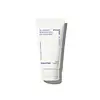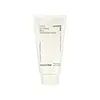What's inside
What's inside
 Key Ingredients
Key Ingredients

 Benefits
Benefits

 Concerns
Concerns

 Ingredients Side-by-side
Ingredients Side-by-side

Water
Skin ConditioningGlycerin
HumectantSodium Cocoyl Isethionate
CleansingHydroxypropyl Starch Phosphate
Diglycerin
HumectantLimonene
PerfumingPotassium Benzoate
PreservativeSodium Methyl Cocoyl Taurate
CleansingPotassium Cocoyl Glycinate
Potassium Cocoate
EmulsifyingLavandula Angustifolia Oil
MaskingButylene Glycol
HumectantAllantoin
Skin ConditioningCitric Acid
BufferingLinalool
PerfumingSodium Phytate
Citrus Aurantium Dulcis Peel Oil
Masking1,2-Hexanediol
Skin ConditioningVaccinium Angustifolium Fruit Extract
Skin ProtectingPanthenol
Skin ConditioningCaprylic/Capric Triglyceride
MaskingMaltodextrin
AbsorbentSaccharide Hydrolysate
HumectantPropanediol
SolventAcrylates/C10-30 Alkyl Acrylate Crosspolymer
Emulsion StabilisingPolyquaternium-67
Euterpe Oleracea Fruit Extract
Rubus Idaeus Leaf Extract
Skin ConditioningWater, Glycerin, Sodium Cocoyl Isethionate, Hydroxypropyl Starch Phosphate, Diglycerin, Limonene, Potassium Benzoate, Sodium Methyl Cocoyl Taurate, Potassium Cocoyl Glycinate, Potassium Cocoate, Lavandula Angustifolia Oil, Butylene Glycol, Allantoin, Citric Acid, Linalool, Sodium Phytate, Citrus Aurantium Dulcis Peel Oil, 1,2-Hexanediol, Vaccinium Angustifolium Fruit Extract, Panthenol, Caprylic/Capric Triglyceride, Maltodextrin, Saccharide Hydrolysate, Propanediol, Acrylates/C10-30 Alkyl Acrylate Crosspolymer, Polyquaternium-67, Euterpe Oleracea Fruit Extract, Rubus Idaeus Leaf Extract
Water
Skin ConditioningGlycerin
HumectantMyristic Acid
CleansingLauric Acid
CleansingPotassium Hydroxide
BufferingStearic Acid
CleansingGlyceryl Stearate
EmollientPalmitic Acid
EmollientGlycol Distearate
EmollientLauryl Hydroxysultaine
CleansingPolyquaternium-22
Limonene
PerfumingSodium Chloride
MaskingSodium Metaphosphate
BufferingCitrus Limon Peel Oil
MaskingCitrus Aurantium Dulcis Peel Oil
MaskingCitral
PerfumingTocopherol
AntioxidantTocopheryl Acetate
AntioxidantOlea Europaea Fruit Oil
MaskingWater, Glycerin, Myristic Acid, Lauric Acid, Potassium Hydroxide, Stearic Acid, Glyceryl Stearate, Palmitic Acid, Glycol Distearate, Lauryl Hydroxysultaine, Polyquaternium-22, Limonene, Sodium Chloride, Sodium Metaphosphate, Citrus Limon Peel Oil, Citrus Aurantium Dulcis Peel Oil, Citral, Tocopherol, Tocopheryl Acetate, Olea Europaea Fruit Oil
Ingredients Explained
These ingredients are found in both products.
Ingredients higher up in an ingredient list are typically present in a larger amount.
Citrus Aurantium Dulcis Peel Oil is oil from the peel of an orange fruit.
Limonene and linalool make up the majority of oils from citrus peels. Limonene has a "citrus" fragrance. Citrus peels also contain flavonoids, which have anti-inflammatory properties.
Citrus peel is also a rich source of flavonoids. Flavonoids are natural antioxidants and help protect your skin against damage. Flavonoids are a group of compounds naturally found in vegetables and fruits.
The term 'fragrance' is not regulated in many countries. In many cases, it is up to the brand to define this term. For instance, many brands choose to label themselves as "fragrance-free" because they are not using synthetic fragrances. However, their products may still contain ingredients such as essential oils that are considered a fragrance.
Learn more about Citrus Aurantium Dulcis Peel OilGlycerin is already naturally found in your skin. It helps moisturize and protect your skin.
A study from 2016 found glycerin to be more effective as a humectant than AHAs and hyaluronic acid.
As a humectant, it helps the skin stay hydrated by pulling moisture to your skin. The low molecular weight of glycerin allows it to pull moisture into the deeper layers of your skin.
Hydrated skin improves your skin barrier; Your skin barrier helps protect against irritants and bacteria.
Glycerin has also been found to have antimicrobial and antiviral properties. Due to these properties, glycerin is often used in wound and burn treatments.
In cosmetics, glycerin is usually derived from plants such as soybean or palm. However, it can also be sourced from animals, such as tallow or animal fat.
This ingredient is organic, colorless, odorless, and non-toxic.
Glycerin is the name for this ingredient in American English. British English uses Glycerol/Glycerine.
Learn more about GlycerinLimonene is a fragrance that adds scent and taste to a formulation.
It's found in the peel oil of citrus fruits and other plants such as lavender and eucalyptus. The scent of limonene is generally described as "sweet citrus".
Limonene acts as an antioxidant, meaning it helps neutralize free radicals.
When exposed to air, oxidized limonene may sensitize the skin. Because of this, limonene is often avoided by people with sensitive skin.
The term 'fragrance' is not regulated in many countries. In many cases, it is up to the brand to define this term. For instance, many brands choose to label themselves as "fragrance-free" because they are not using synthetic fragrances. However, their products may still contain ingredients such as essential oils that are considered a fragrance.
Learn more about LimoneneWater. It's the most common cosmetic ingredient of all. You'll usually see it at the top of ingredient lists, meaning that it makes up the largest part of the product.
So why is it so popular? Water most often acts as a solvent - this means that it helps dissolve other ingredients into the formulation.
You'll also recognize water as that liquid we all need to stay alive. If you see this, drink a glass of water. Stay hydrated!
Learn more about Water